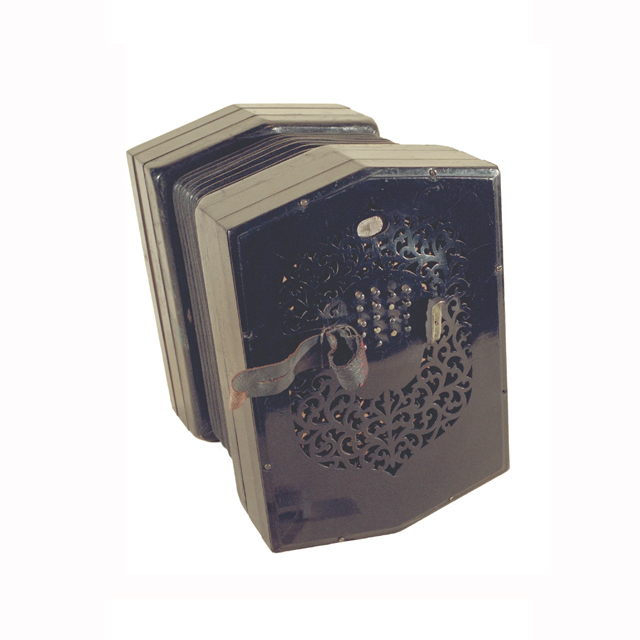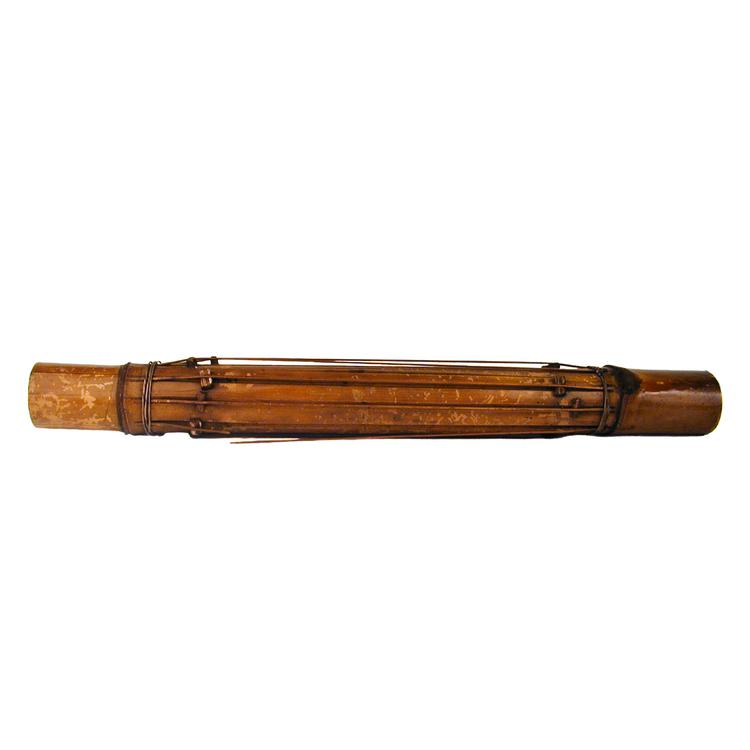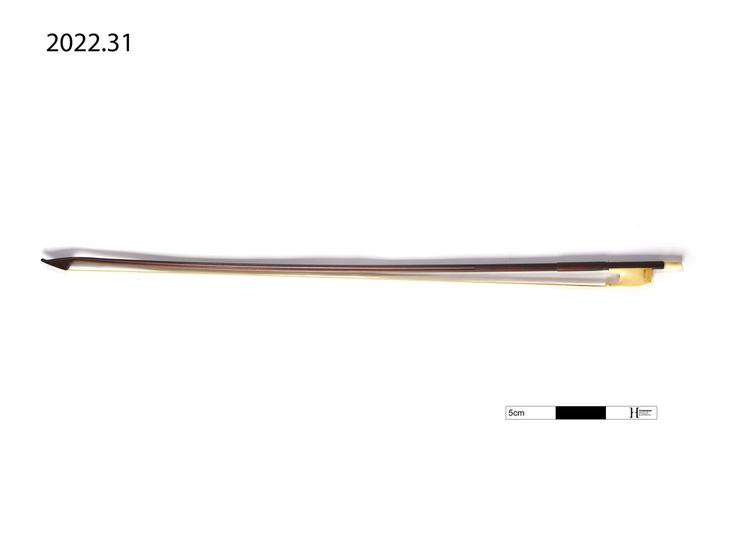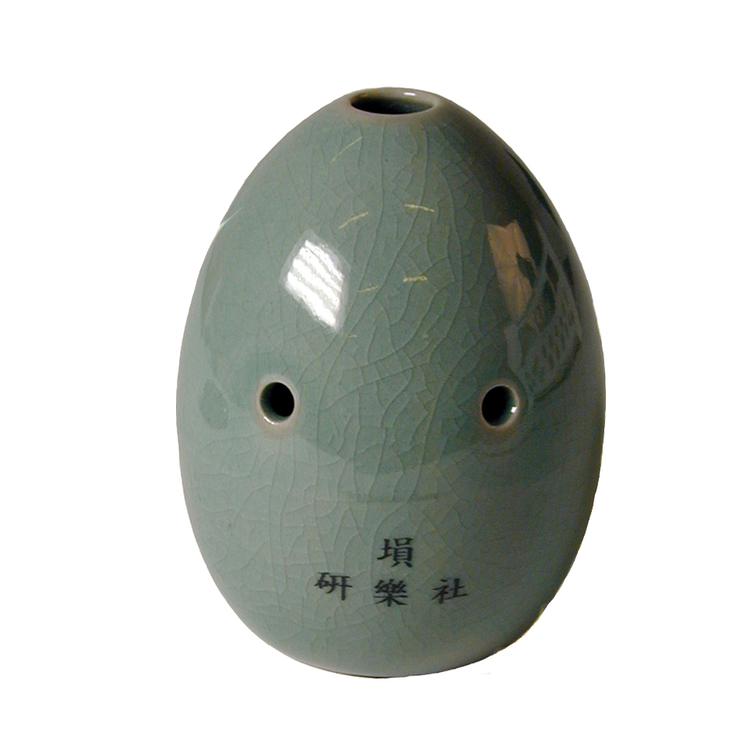
Ryūteki, transverse flute. Bamboo body with a cylindrical bore. Seven finger holes and an embouchure, all slightly ovular. Proximal end is stopped, the inside of the stopper covered with white beeswax immediately above the embouchure. This is used for tuning. Ten bands of cherry bark around the instrument, including one between each finger hole. The bark is bound with twine and covered with lacquer or imitation lacquer. One of a pair with 24.8.56/91a, which fit together in the case 24.8.56/91b.
The gagaku courtly music of Japan is based on traditions dating from the Heian period (794-1185). Japanese musical culture had previously absorbed a complex array of influences from mainland Asia. In the middle of the 8th century, a move was made to codify these foreign influences, and the music of the royal court was streamlined into two complimentary styles: To-gaku, which encompassed Chinese and Indian elements, and Koma-gaku, which brought together Korean and Manchurian musical ideas. The ryuteki was closely modeled on a similar flute used in China and known as the longdi (both mean 'dragon flute') and it therefore became part of the To-gaku ensemble, in which it is still played today.






